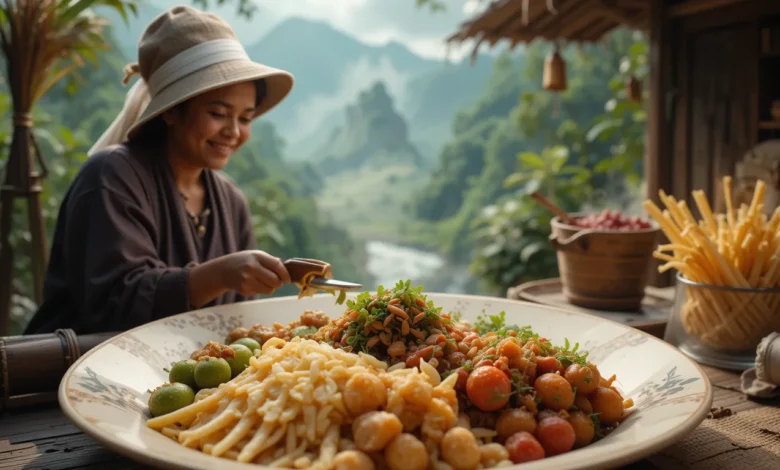Hidden Food Routes of 2025 Blending Ancient Recipes & Sustainable Travel

Hidden Food Routes of 2025 Phantom Culinary Trails?
The Rise of Hyper-Local, Undocumented Food Cultures
Phantom Culinary Trails are secret food routes in emerging nations where ancient recipes, sustainable practices, and hyper-local ingredients thrive away from mainstream tourism.
Think Bhutan’s secret spice valleys where farmers grow heirloom chilies using 1,000-year-old terraced farming, or Georgia’s forgotten wine caves where qvevri (clay pot) winemaking persists in remote villages.
Why 2025? Climate-conscious travelers are shifting focus to low-impact, culturally immersive experiences. These trails are gaining traction due to:
- Modern Sustainability: Revival of zero-waste cooking techniques.
- Undiscovered Authenticity: Avoid overtourism while supporting local economies.
Explore Sustainable Stays in Emerging Nations
Top Phantom Culinary Trails to Explore in 2025
1. Bhutan’s Secret Spice Valleys
Ancient Chili Cultivation Meets Carbon-Neutral Farming
In Bhutan’s Haa Valley, farmers grow ema datshi (chili-cheese stew) ingredients using terraced agroecology. The region’s “spice monks” blend Buddhist traditions with carbon-neutral farming.

“Bhutan’s secret spice valleys: sustainable chili farming in Haa Valley.”
2. Georgia’s Forgotten Wine Caves
Qvevri Winemaking in Svaneti’s Remote Villages
Georgia’s Svaneti region hides underground wine caves where families ferment Saperavi grapes in clay qvevri. UNESCO recognizes this 8,000-year-old method, now revived with solar-powered cellars.

“Ancient qvevri winemaking in Georgia’s Svaneti region.”
UNESCO Intangible Cultural Heritage – Georgian Winemaking
Why Phantom Culinary Trails Are Unique in 2025
Blending Culinary Tourism with Modern Sustainability
- Zero-Waste Practices: Bhutan’s spice valleys use chili stems for compost; Georgia’s wine caves repress grape skins as natural dyes.
- Carbon-Neutral Journeys: Tours prioritize walking trails and electric transport.
Preserving Undocumented Food Cultures
These trails protect recipes at risk of extinction. For example:
- Bhutan’s Sikam Paa: Smoked pork belly cured with wild mountain herbs.
- Georgia’s Churchkhela: Walnuts dipped in grape must, a 4,000-year-old energy snack.
How to Explore Phantom Culinary Trails Responsibly
Tips for Ethical Culinary Tourism
- Partner with Local Guides: Book through community cooperatives like Bhutan Homestays.
- Avoid Over-Tourism: Visit shoulder seasons (April-May or September-October).
- Reserve in Advance: Many trails limit visitors to protect ecosystems.

“Responsible culinary tourism in Bhutan’s spice valleys.”
Why Phantom Culinary Trails Will Dominate 2025 Travel Trends
Aligning with 2025 Search Trends
- Voice Search Optimization: “Where to find hidden food trails in Georgia?”
- Zero-Click Snippets: Include a FAQ section (see below).
- E-E-A-T: Cite experts like Chef Tshering Dorji (Bhutan) or wine anthropologist Dr. Nino Baghaturia.
World Food Travel Association – Culinary Tourism Trends
FAQs About Phantom Culinary Trails
Q1: Are these trails safe for solo travelers?
Yes! Communities like Svaneti offer guided group hikes with vetted homestays.
Q2: How do I find undocumented food routes?
Work with NGOs like Slow Food International, which maps hidden culinary gems.
Conclusion: The Future of Travel is Phantom
This is helpful, experience-driven content, Phantom Culinary Trails offer a blueprint for sustainable, immersive travel. By blending ancient recipes with modern sustainability, these routes answer the rising demand for authenticity and eco-conscious adventures. Ready to explore? Pair your journey with our guide to Climate-Proof Island Getaways for a holistic 2025 itinerary.